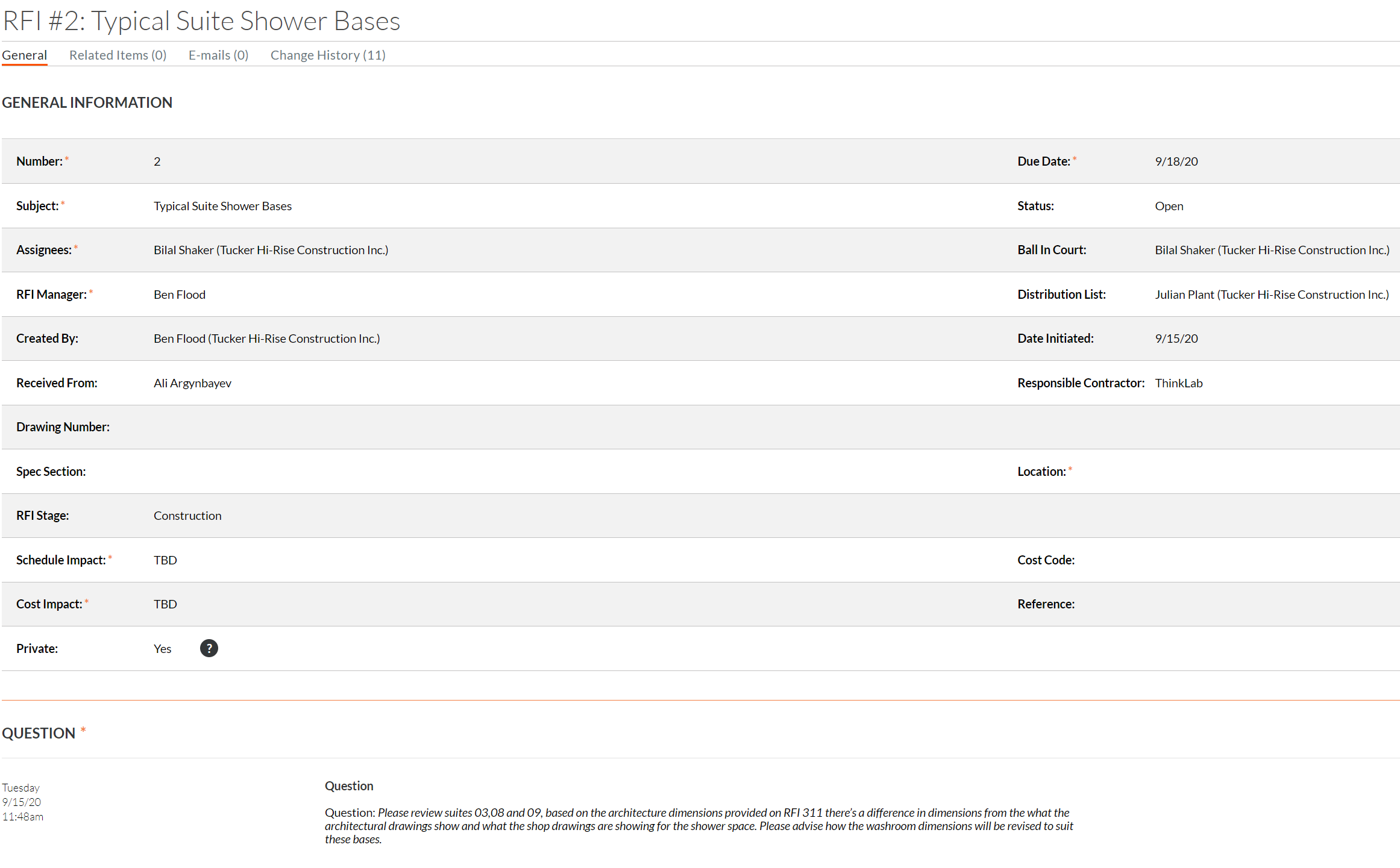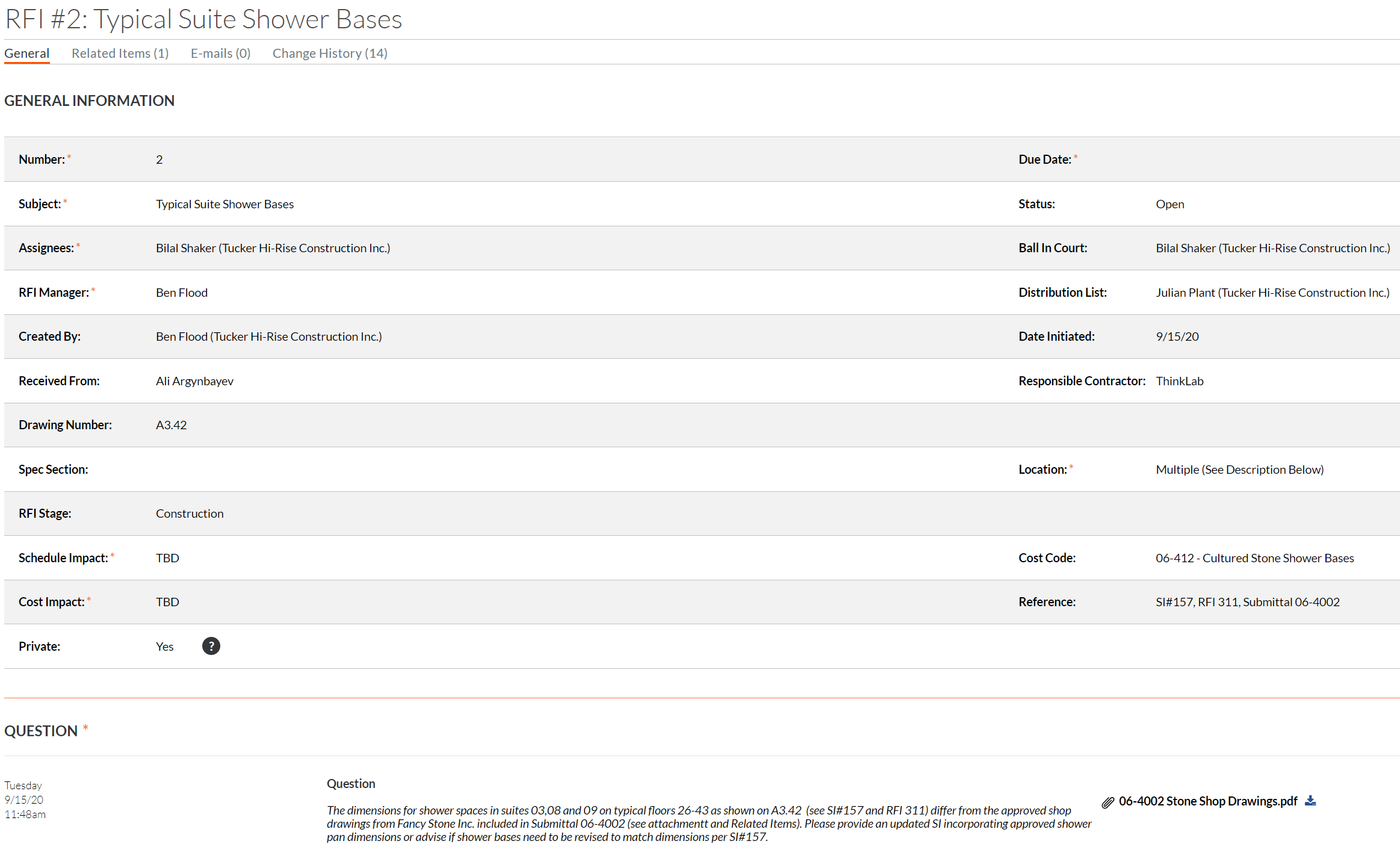Engineering RFIs
Better RFIs = Faster Responses
Conventional thinking puts all of the responsibility for responding to RFIs in a timely manner on consultants. While the RFIs tool in Procore can make this process more efficient, what will make this biggest difference is writing really good RFIs. Put yourself in the consultant's shoes for a minute and pretend you have just received the following RFI:

As you can see, many useful fields such as Drawing Number and Location are blank, there are no attachments or related items linked, and the Question does not include critical information such as what floors this occurs on and what drawing sheets show conflicting information. This makes search in RFIs tool essentially useless! And worse, before you (the consultant) can begin to evaluate and resolve the conflict you will need to gather documents including:
- RFI #311 (which references SI #157, but does not include attachments or a Related Items link to SI#157)
- SI #157 (which provided a reference to sheet A3.42)
- A3.42
- Shower Base shop drawings (which in this case were included in a larger shop drawing package and could not be located by searching for the responsible contractor or the word "shower" in the Submittals tool. Only someone with a memory of this submittal would be able to locate it which is a problem if critical team members are on vacation or change employment)
As a consultant trying to respond to this or as an outside team member trying to track down the history, it would take 30+ minutes to find all the documents (not an exaggeration - this is actually how long it took) which makes it much more likely they will put it on a "to-do" list and adding days to the response time. Instead, if the question is easy to answer they are more likely to do it right then, which they would actually prefer to do to avoid adding to an ever growing to-do list. This could have been avoided by completing 2 additional fields (Drawing and Reference) and attaching the referenced shop drawings or at least tagging it as a related item. The more complete and detailed information included in RFI, the easier is for a consultant to answer. If there is a way to format the question such that it doesn’t require escalation within the architecture team this will also help improve RFI response time. Better RFIs = Faster Responses.
Here's an example of how the RFI should look. Note the completed fields which optimizes search tools, detailed information in the Question, attached and linked shop drawings, and clear question. Always start with a description of the problem or conflict, and finish with exactly what you would like to be done about it (i.e please issue an updated drawing):


